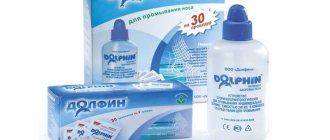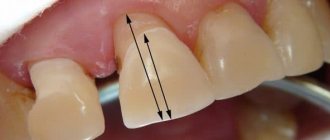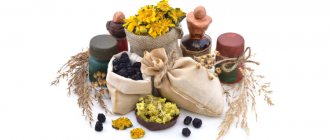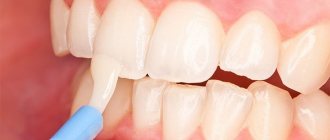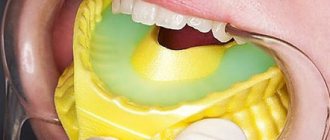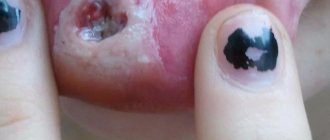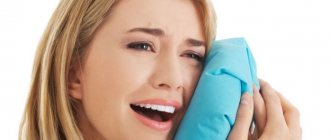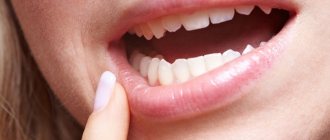We take salt for granted as a necessary seasoning for dishes. Meanwhile, this substance, important in cooking, is a healer, a magical protector and an assistant in the household.
For treatment, salt is often used in dissolved form. The methods have a number of nuances that you definitely need to know about. For example, how do you make a 10 percent saline solution if you don’t have chemical measuring spoons or beakers at home? How much salt and water should I take? Let's look at simple options for preparing medicinal solutions.
What salt is needed to prepare medicine?
Before preparing a 10% saline solution, you need to carefully study the recipe. What substance does it mention? If it is table salt, then the packages that indicate:
- kitchen salt;
- sodium chloride;
- table salt;
- rock salt.
The word “salt” is used in everyday life, although this term refers to many complex substances formed by metal ions or atoms and acidic residues.
In addition to sodium chloride, Epsom salt, magnesium sulfate, is used for medicinal purposes. Substances are extracted during the development of deposits in the earth's crust. If you evaporate sea water, you get sea salt, which contains sodium, magnesium, iodine, chloride, sulfate ions and other components. The properties of such a mixture differ somewhat from the individual substances. Typically, a 1–10% saline solution of sodium chloride is prepared to treat wounds, sore throats, and teeth. The chemical formula of a compound that has amazing properties is NaCl.
What should be the degree of purity of the components?
How to make a 10 percent saline solution at home so that the medicine does good and not harm the body? Salt should also be as pure as possible, but salt purchased at the Kamennaya store is often contaminated with impurities. There is a purer finely ground product.
Some recipes recommend using snow or rain water, but this is a bad idea from the point of view of modern ecology. The purity of the liquid that flows in drinking water supply systems also raises many complaints. It, like snow and rain, can be contaminated with chlorine, iron, phenol, petroleum products, and nitrates. Let us clarify that distilled or demineralized water is used as a solvent in medicine. At home, you can use filtered or boiled water to prepare the solution.
If you put plastic molds with water in the freezer, the clean water will freeze first, and impurities will accumulate at the bottom. Without waiting for complete freezing, you need to collect the ice from the surface and melt it. The result will be very clean and healthy water.
Subtleties of salting
In order for salted dried fish to delight you with its excellent taste, you need to use salt for salting wisely. Only coarse salt is suitable for this. It dissolves slowly at low temperatures, and to do this it requires water, which it draws from the fish.
Oddly enough, fine salt is not suitable for salting fish - only the top layer will be salted with it, the carcass will not be dehydrated and will simply rot.
However, there are exceptions to all rules. When salting, for example, bleak or dace, the use of fine salt is not prohibited.
Iodized salt is also prohibited when salting fish: iodine burns the upper layers of the skin, and the product is only thrown away.
How to measure the mass of salt and the volume of water to prepare a solution?
Everything you need should be collected in advance, before making a 10% saline solution. You will need water, a beaker, a bag of salt, scales, a glass and a spoon (table, dessert or tea) for the work. The photo below will help you determine the mass of salt contained in a dessert spoon and a teaspoon.
Then you need to decide on the units of measurement for the liquid. It is believed that the mass of 100 ml of pure fresh water is equal to 100 g (the density of fresh water is 1 g/ml). Liquids can be measured with a beaker; if you don’t have one, then an ordinary glass of those called “faceted” will do. Filled to the top, it contains 200 ml of water (or g). If you pour to the very top, you get 250 ml (250 g).
How to properly rinse your nose with sea salt - instructions
To carry out the procedure, you need to take any container with a narrow and smooth neck, so that it fits into one nasal passage without any problems. You can use a regular kettle for brewing tea, a neti pot, a syringe or a disposable syringe. Which device is chosen does not matter; it should be convenient for the patient. But you need to know how to properly rinse your nose with the solution.
“Grandma’s” method of washing
If you don’t have anything convenient and suitable at hand, you can rinse your nose the “grandmother’s” way. This procedure is easy to do even not at home. Sea salt for nasal rinsing is used as follows:
- A teaspoon of the product is stirred in water until completely dissolved.
- The prepared salt solution is scooped up with the palm of your hand.
- The fingers of the second hand press one nostril, and the opposite hand slowly draws in liquid from the palm.
- If the actions are correct, the solution will flow out through the mouth.
- Next, the procedure is carried out with the other nostril.
This washing method is quite simple, but is not suitable for everyone. For small children and infants, other methods should be used.
Using a kettle
The procedure is best carried out in the bathroom. They do it as follows:
- Add salt to a teapot or neti pot and dilute it with water.
- The head is tilted over the sink and turned to one side.
- The spout of the teapot is inserted into the nostril located on top.
- If everything is done correctly, the liquid will flow out of the parallel nostril.
- Next, all actions are repeated, tilting and turning the head in the opposite direction.
After washing, you should lie down for a while and rest. It is not recommended to go out into the fresh air after the procedure.
Using a syringe, douche
Other suitable devices can be used to rinse the nose. It is very convenient to carry out the manipulation using a regular syringe or a medical syringe.
- Use the selected device to draw up the solution.
- Then the head is bowed over the bathtub or sink and the tip of the bulb or syringe is inserted into the nostril.
- After slowly squeezing the syringe or pressing the syringe plunger, liquid will begin to flow into the nasal passage and flow out through the other.
- All steps are repeated by inserting the device from the second side.
What does the expression “10 percent solution” mean?
The concentration of substances is usually expressed in several ways. The most commonly used quantity in medicine and everyday life is the weight percentage. It shows how many grams of a substance are contained in 100 g of solution. For example, if a recipe states that a 10% saline solution is used, then every 100 g of such a preparation contains 10 g of the dissolved substance.
Let's say you need to prepare 200 g of a 10% salt solution. Let's carry out simple calculations that don't take much time:
100 g of solution contains 10 g of substance; 200 g of solution contains x g of substance. x = 200 g x 10 g: 100 g = 20 g (salt). 200 g – 20 g = 180 g (water). 180 g x 1 g/ml = 180 ml (water).
How to prepare a 10% saline solution?
If you have scales and a beaker in your house, then it is better to measure the mass of salt and the volume of water with their help. You can also take a full teaspoon and pour a glass of water up to the mark, but such measurements are prone to inaccuracies.
How to make a 10% saline solution to make 100 g of the drug? You should weigh out 10 g of solid sodium chloride, pour 90 ml of water into a glass and pour salt into the water, stirring with a spoon until dissolved. Mix salt with warm or cold water, and then heat the dishes with the ingredients. For better cleansing, the finished solution is passed through a ball of cotton wool (filtered).
You can prepare 50 g of a 10% solution from 45 ml of water and 5 g of salt. Hypertonic saline solution is made from 1 liter of water and 100 g of sodium chloride (4 tablespoons “without top”).
ALKALINE HEALTH SYSTEM
ALKALINE BATH
The most important place in the system of survival in a poor ecological environment is occupied by an alkaline bath.
Unfortunately, an alkaline bath now often means a soda bath. But this is not true. An alkaline bath is not just a soda bath, but a soda-salt bath.
Both salt and soda have equal and equal importance here.
The history of the alkaline bath begins in ancient times. Ancient Egypt, ancient Rome - such baths were already known everywhere. Thalassotherapy - healing through the sea and seafood - has also been known since ancient times (and the sea and seafood are all completely alkaline). Actually, the sea is essentially the largest “alkaline bath” in the world.
The principle behind the alkaline bath: IMITATE the intrauterine environment (or marine environment)
Operating principle of alkaline bath: OSMOSIS. Osmosis is pressure. There are two types of osmosis – endosmosis and exosmosis. When the pressure equalizes, the two environments become ISOTONIC.
The osmotic interaction between acid and alkali is that the movement of ions always occurs FROM ACID TO ALKALI and not vice versa. An alkaline bath creates a situation where exosmosis turns on - i.e. in fact, EXTRACT from the body of all those components that acidify the blood. Those. In short, the principle of operation of an alkaline bath can be described as follows: the more acidified the blood is, the stronger the extract will be.
Extraction is carried out due to the fact that our skin is VERY PERMEABLE. Everyone knows about skin respiration, thermoregulation through the skin, sweating and the absorption of liquid by the skin. So this is exactly what allows osmosis to turn on. The capillaries that are located DIRECTLY UNDER THE SKIN are also very permeable, so the alkaline environment of the bath may well trigger osmosis and maintain it the entire time we are in the bath.
TECHNICAL POINTS OF ALKALINE BATH
If we want to make a bath with maximum “reinsurance”, i.e. the safest and most gentle, then we need to create in fact a saline solution (or an environment slightly more concentrated than saline solution) in the bath - i.e. this would be 0.09 to 0.12% NaCl
The more concentrated the solution we create, the more intense the osmosis will be.
If the body is healthy, strong, thriving, then it is not afraid of 0.30% NaCl, it will just sleep like the dead for several hours, but it will wake up like a cucumber.
But for an organism that is already weakened, not thriving, and not at the peak of health, such a radical approach is not entirely correct.
And therefore it is better to start with strict adherence to this principle - to create an environment corresponding to the value of saline solution, i.e. around 0.09-0.10% NaCl
How to technically implement this?
We measure the amount of water in the bathroom (of course, taking into account the displacement of water by our body)
How to measure? We take: a basin and a 3-liter jar. We fill the basin and see how many cans fit into it. Determine the volume of the basin. And then we fill the bath with this basin. It is enough to do this once and we will know the volume of our bath taking into account the displaced water.
And add salt and soda there at the rate of 900g per 100l
For the convenience of calculating these 900 grams, we remember that approximately 25 grams of salt fit in one tablespoon.
Therefore, if we remove 4 tablespoons from a standard pack, we will get the same 900g
Or - which is quite acceptable - at the rate of 1 kg per 100 liters (so that the calculation is not such a complicated one)
Strictly important: COARSE GRIND table salt!!!!!!!!!!!!
By no means “Extra”!!!
All. The saline solution is ready. We are guaranteed the safest possible osmosis.
PROPORTION OF SALT AND SODA
Soda is the more radical element in this bunch.
Those. soda - accelerates osmosis, enhances the cleansing process in the body.
Therefore, for people with poor health, soda should be added to the bath very gradually.
From two hundred grams - 8 tablespoons.
Those. if we have a 100 liter bath, then we should put 900 grams of salt + soda mixture here.
And so we put in it 200g of soda per 700g of salt.
As a result, we get the required 900g
Next time we add 50 grams of soda to the bath, reducing the amount of salt accordingly.
Next time we add another 50g of soda.
And so we bring it to 300 soda.
And this amount can be left for a long time until the person feels that it is possible to increase the dose.
Now for healthy people:
For a medically healthy body, you can take a full pack of soda at once, i.e. 0.5 kg. And calculate the salt according to the volume of the bathroom, and without bothering about 0.09%, but immediately focusing on 0.10%
Let's say the bath is 150 liters. For this volume we take 1 kg of salt and 0.5 kg of soda
Next, healthy people can experiment with increasing the concentration of this salt + soda mixture, carefully observing their sensations.
Personally, my standard proportion is two packs of soda to three packs of salt . And when I’m especially tired, or physically overworked, or under some kind of stress, then I put three packs of soda on four packs of salt.
Everyone eventually comes to their own dosage. It is important to know the strict norm, and from there, gradually, carefully experiment, choosing for yourself the proportion that is most suitable.
HOW TO ENRICH YOUR ALKALINE BATH?
If funds allow, you can use sea salt instead of table salt.
This will enrich the bath with microelements.
If the funds are not particularly large, but everything is not completely sad, you can replace some of the table salt with sea salt. For example, 0.5 kg sea
Next, you can enrich such a bath with iodine by adding 10-15 drops of iodine into the bath.
You can enrich it with kelp by pouring it after a coffee grinder, or pouring in pre-prepared kelp infusion.
You can enrich it with essential oils, as shown on my page on alkaline detoxification,
Add essential oils to the soda before adding to the bath.
It is important to add essential oil just a little bit. Literally 1-2 drops for a whole bath. If you put more, then after 40 minutes the skin begins to noticeably burn.
In general, here it is quite possible to run wild with your imagination in terms of enriching the alkaline bath.
ALKALINE BATH TEMPERATURE
If the body is weakened, if the pressure is unstable, then the temperature should be around 37-38 degrees. Those. lukewarm water.
For a more or less healthy body, the temperature can be set at around 40-42%.
No need for hot
TIME IN THE BATH
For weakened people, you should start with half an hour and increase your stay in the bath to one hour.
For healthy people, it is advisable to take a bath from one to three hours.
The main healing effect begins just after about an hour spent in the bath.
As the water cools, add hot water so that it is always comfortable.
DRINKING IN AN ALKALINE BATH
Be sure to drink unboiled water in the bath:
- plain water - water with honey - water with propolis - water with lemon and honey - water with apple cider vinegar and honey - mineral water like “Essentuki”, “Narzan”, etc. (who likes which one)
WORKING WITH CONSCIOUSNESS IN AN ALKALINE BATH
When we reach the level of spending an hour or more in the bath, it is important to learn to fill this time with some kind of creative practice, because otherwise the mind will “revolt.”
Our minds cannot simply rest. He always drives us into some kind of activity. And therefore it is very important to learn to occupy him in the bath with something that gradually leads him to peace.
What are the options here?
First, doze off and just doze quietly the entire time you are in the bath.
Further:
- listening to music with binaural beats (about this music, as well as this music itself - here). There are even ready-made music sessions that are quite suitable for listening in an alkaline bath.
- listening to simply harmonious, smooth, rising music from my collection - .
— breathing practice (you can read about it and download it here)
- reading harmonizing literature, for example from this collection
- reading health literature, for example - from this collection
- reading educational psychological literature, for example, this one
- listening and viewing educational audio and video materials on the alkaline approach to health, for example, from my conversations posted on the site:
conversations about the alkaline health system,
conversations about rebirthing,
conversations about pranayama,
conversations about breathing practice in general,
video materials on the alkaline healing system,
It’s also very good to listen and watch audio and video materials of Neumyvakin, Ogulov and other specialists in alkaline healing
As well as prayer practice, meditation practice, Reiki practice and any other practices with which a person is at least somewhat familiar.
ALKALINE BATHS COURSE
For the normal course of life, it is enough to take two baths a week .
This is considered a single bath.
But a course of alkaline baths works an order of magnitude more powerful than a single bath.
A course of alkaline baths is when baths are strictly done every other day.
There are small and large courses of alkaline baths.
Small course of alkaline baths - 21 baths, large course - 40 baths.
If your health is generally normal, it is enough to take one small course every six months.
It is enough to do the large course once and then practice the small course.
About all this in as much detail as possible in our large-scale video:
But here this large video material is divided into fifteen shorter parts. Therefore, those who prefer to watch in parts can go there.
* * *
For all questions regarding the practice of the Alkaline Health System, for all the individual characteristics of this practice, you can use the online consultation service
Here is a video story about why such a consultation is needed and what it will give:
* * *
In addition, a lot of practical information on alkaline healing in its various aspects (nutrition, water regime, alkaline procedures, psychological aspects, bioenergetic aspects, etc.) is available on our “Holistic Wellness” forum
All my students participate in the work of this forum, as well as many clients who have received excellent results in alkaline healing. On the forum you can ask any questions and chat with people who practice the alkaline approach to healing and already have extensive personal experience in this.
* * *
TABLE OF CONTENTS
* * *
PREFACE
Part 1 BASIC CHEMICAL PROCESSES IN THE BODY
Part 2 BASICS OF BODY REGULATION
Part 3 CONCEPTS OF HEALTH, ILLNESS, HEALING
Part 4 ENJOYMENT, ACIDIC AND ALKALINE
Part 5 SLAG DEPOSITION AND HOW IT OCCURS
Part 6 METABOLISM IN MEN AND WOMEN IN THE LIGHT OF SLASH FORMATION
Part 7 AGING IN THE LIGHT OF THE PROCESS OF SLAG FORMATION
Part 8 PREGNANCY IN THE LIGHT OF SLA FORMATION
Part 9 CELLULITE FROM THE POINT OF VIEW OF SLAG FORMATION
Part 10 HAIR LOSS AS A RESULT OF SLUGGING IN THE BODY
Part 11 FEATURES OF SLAG FORMATION UNDER SPORTS LOADS
Part 12 ALKALINE HEALTH METHODS
Part 13 ALKALINE HEALTH COURSES
Part 14 CHEMISTRY OF WASH REMOVAL
Part 15 TARGETED WASH REMOVAL
Part 16 FASTING CRISIS AS ACID ATTACK
Part 17 CAREFUL DISPOSAL
Part 18 DISEASE PREVENTION AND PREVENTIVE MEDICINE * * * APPENDICES
Appendix 1 ACID-BASE EQUILIBRIUM
Appendix 2 NUTRITION FROM THE POINT OF ACID-BASE BALANCE
Appendix 3 SODA AND WAYS OF USING IT FOR HEALTH
Appendix 4 CORRESPONDENCE ON THE ALKALINE SYSTEM: exchange of experiences, living recipes and methods of alkaline healing
Appendix 5 RELATED TOPICS ON THE ALKALINE HEALTH SYSTEM
* * *
Treatment with 10% saline solution
In medicine, a 0.9% solution of salts is prepared using fresh distilled water, which is called “physiological”. This liquid is isotonic with respect to the internal environment of the human body (has the same concentration). It is used during various medical procedures, in particular as a blood substitute, to eliminate the effects of dehydration and intoxication.
A hypertonic solution contains more salt; when it comes into contact with an isotonic or hypotonic liquid, it attracts water until the concentrations equalize. This osmotic effect is used in folk recipes to cleanse wounds of pus. Salt has antiseptic and antimicrobial properties; its hypertonic solutions are used in alternative medicine:
- for diseases of internal organs - in the form of a salt bandage on the source of pain;
- as lotions, compresses and applications for skin and other infections;
- as salt baths for fatigue and pain in the hands and feet;
- to cleanse purulent wounds.
Treatment with hypertonic 10% saline will take time and may take several days or weeks. The minimum number of procedures is 4–7. For sore throat, use a 3-5% hypertonic solution for gargling in the morning and evening. The nasal cavity is washed with an isotonic solution. To prepare it, you need to add 1.2 g of sodium chloride and 2.5 g of baking soda to 237 ml of boiled water.
Frequency and duration of use
If alkaline inhalations are prescribed to prevent the disease, then 1-2 procedures are performed per day, and if there are symptoms of inflammation or allergies, the number can be increased to 3-5. A session using a nebulizer lasts 3-5 minutes, depending on the power of the device.
Steam inhalations last 5-7 minutes for children and 7-10 minutes for adults. The course of treatment in most cases lasts 3-7 days. Using alkaline solutions for more than a week can have a drying effect on the mucous membranes.
